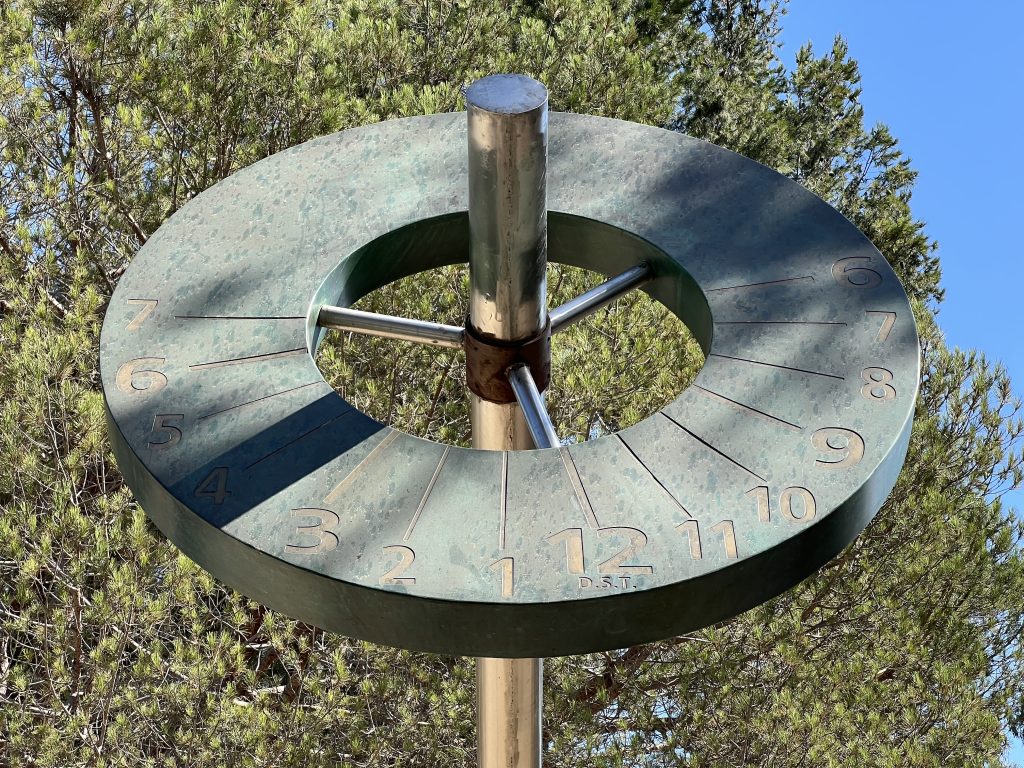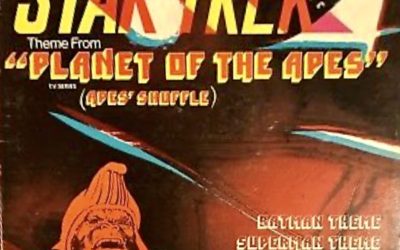
Perched near the edge of a hill in Culver Park, this sundial offers a great view of the surrounding neighborhoods. The dial itself features a six-foot-wide, six-inch-thick brass ring that serves as the equatorial dial face, supported by a 24-foot-long steel gnomon, which is six inches in diameter. This gnomon is securely anchored in a concrete base, shaped like an oval and decorated with tiles and mosaics. The base, along with three nearby water-drop-shaped ovals, is inscribed with the word “Time” in the 12 different languages spoken in Culver City. From the sundial, you can also see Ballona Creek, which was once a vital source of transportation, food, and recreation for both the native American population and the later Spanish ranch owners.
The sundial is designed with two faces: the north face, where the 1:00 hour line is placed at the bottom for Daylight Savings Time, and the south face, where the 12:00 hour line is at the bottom for standard time. A bronze plaque on the sundial explains that time is read from the center of the gnomon’s shadow and briefly touches on the equation of time. It’s important to note that the dial isn’t longitude corrected, so it indicates local apparent time.
This beautiful piece of craftsmanship isn’t just about telling time; it also serves as a reminder of the rich history of the area, from the native American tribes who once thrived here to the Spanish ranch owners who followed. The intricate details and thoughtful design make this sundial a unique and meaningful landmark in Culver Park.



